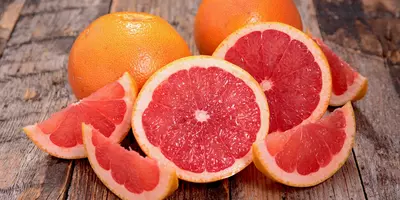Can Dogs Eat Parsnips?
- 27 Jun 2023
- 4m read

Yes, dogs can eat parsnips in controlled quantities.
Are Parsnips Good for Dogs?
Yes, parsnips are good for dogs.
Parsnips are full of health benefits for dogs, when consumed in moderate amounts. These root veggies are rich in essential vitamins, minerals and fibre. They contain vitamins C and K, which support a healthy immune system and aid in essential blood clotting. Parsnips are also a good source of folate, potassium and manganese.
Phew, we thought that list would never end.
Benefits of Parsnips for Dogs
Adding parsnips to your dog's diet can have a number of different health benefits, such as:
Help to maintain digestive health
The fibre content in parsnips can help to maintain a healthy digestive system in pooches and promote regular bowel movements. Healthy poos, we’re coming for you.
Boost of essential nutrients
Parsnips can also provide dogs with an additional nutritional boost, as they contain many vital vitamins and minerals, such as magnesium and potassium, that contribute to their overall health and wellbeing.
Good for dogs watching their waistline
This low-calorie vegetable can be a great addition to a weight management plan for pooches on the chubbier side, as their density helps to provide a sense of fullness without adding excessive calories.
Can Dogs Eat Cooked Parsnips?
Yes, dogs can eat cooked parsnips.
Gently cooking parsnips is actually the best way to feed this veggie to your pup. Cooking parsnips can help to break down their tough texture and make them easier for dogs to chew and digest.
However, you should not add any seasonings, oils or spices during the cooking process, as these can be harmful to dogs. That means no leftover honey-roasted parsnips from your Sunday dinner, too.
Plain, unseasoned cooked parsnips are the safest option for a pawsitively delightful snack. Be sure to remove the skin or scrub it thoroughly to get rid of any bacteria and pesticides.
Can Dogs Eat Raw Parsnips?
Yes dogs can eat raw parsnips, although we don't recommend feeding them in this way.
Raw parsnips are not toxic to dogs but they can be incredibly challenging to digest due to their high-fibre content. They may also pose a choking hazard or cause gastrointestinal distress in some pooches, so it’s best not to risk it.
We recommend gently cooking parsnips before feeding them to your pup, this way most of the nutritional benefit will remain whilst also making them easier to chew and digest.
Can Dogs Have Parsnip Skin?
It’s best to remove parsnip skin before feeding it to your pooch.
The skin is super tough and can cause gastrointestinal discomfort. It can actually be a choking hazard as well, especially for pups that inhale their food. Peeling the parsnips will help to make sure that your dog can safely eat this power veggie without any concerns.
How Much Parsnip Can Dogs Eat?
The exact amount of parsnip varies based on things like on a dog’s weight, age and activity level. There’s no one-size fits all, but as a general guideline we would recommend 2-3 bite-sized pieces to start with.
As with all new foods, starting with small amounts means that parsnip is less likely to cause stomach upset. Keep an eye on your pooch and if they’re still tail-wagging happy, you can gradually increase the quantity each time you feed them parsnip.
Be mindful that treats should make up no more than 10% of your dog’s daily caloric intake. They should be fed alongside a nutritionally-complete diet, such as Butternut Box.
Parsnips in Butternut Box Meals
At Butternut Box, we include parsnips in a lot of our meals, such as You’ve Got Game and Ready Steady Veggie.
We only use the best-quality ingredients in our meals. As well as 60% human-quality meat, vegetables form the basis for our recipes, alongside things like lentils and pearl barley. Because we believe dogs deserve better.
You don’t have to worry about guesswork either, we use the perfect balance of ingredients in our meals to ensure that they are nutritionally-complete, providing your dog with all the nutrients that they need to thrive.
At sign up, we will ask you a few questions about your dog, such as their breed, age and activity level. This will help us to calculate exactly how many calories they need, as well as the flavours that would best suit their preferences and lifestyle.
Click the Build Your Box button below to get an exact price and plan.
Other Vegetables Dogs Can Eat
Parsnips are joined by an army of other pooch-pleasing vegetables, such as:
• Broccoli
• Peas
• Green beans
• Celery
• Sweet potatoes
• Cauliflower
• Spinach
• Butternut squash
• Kale
• Brussels sprouts
• Peppers
• Beetroot
• Cucumber

.webp)


